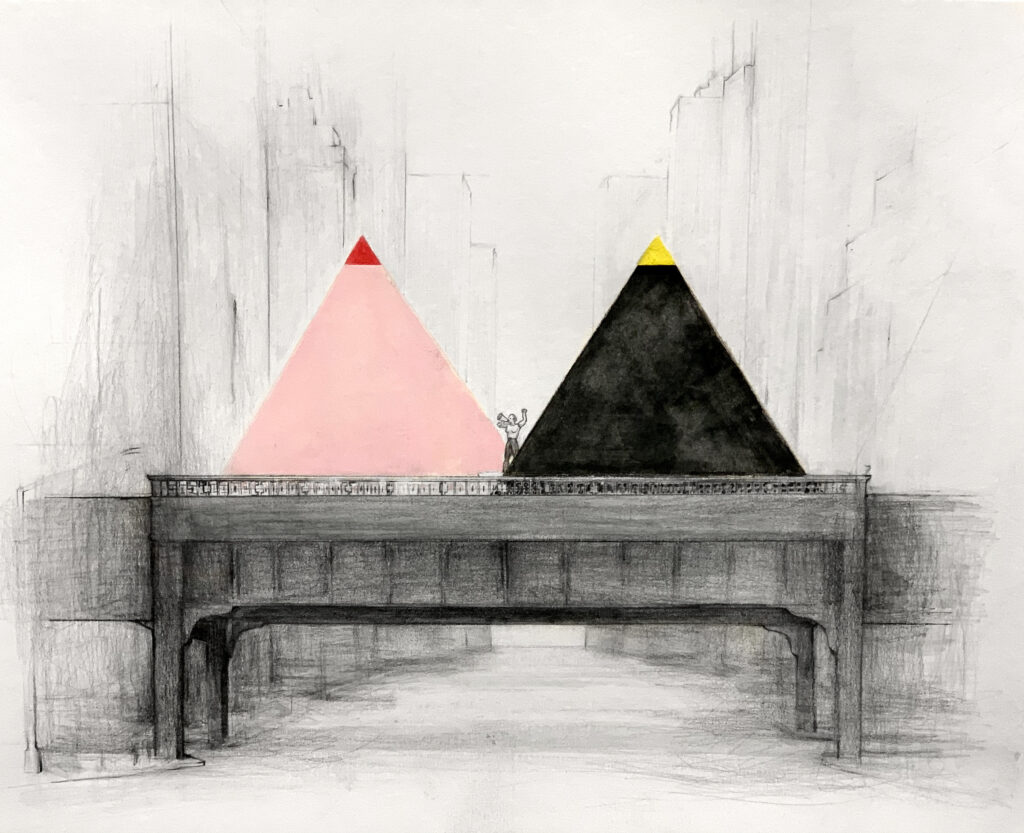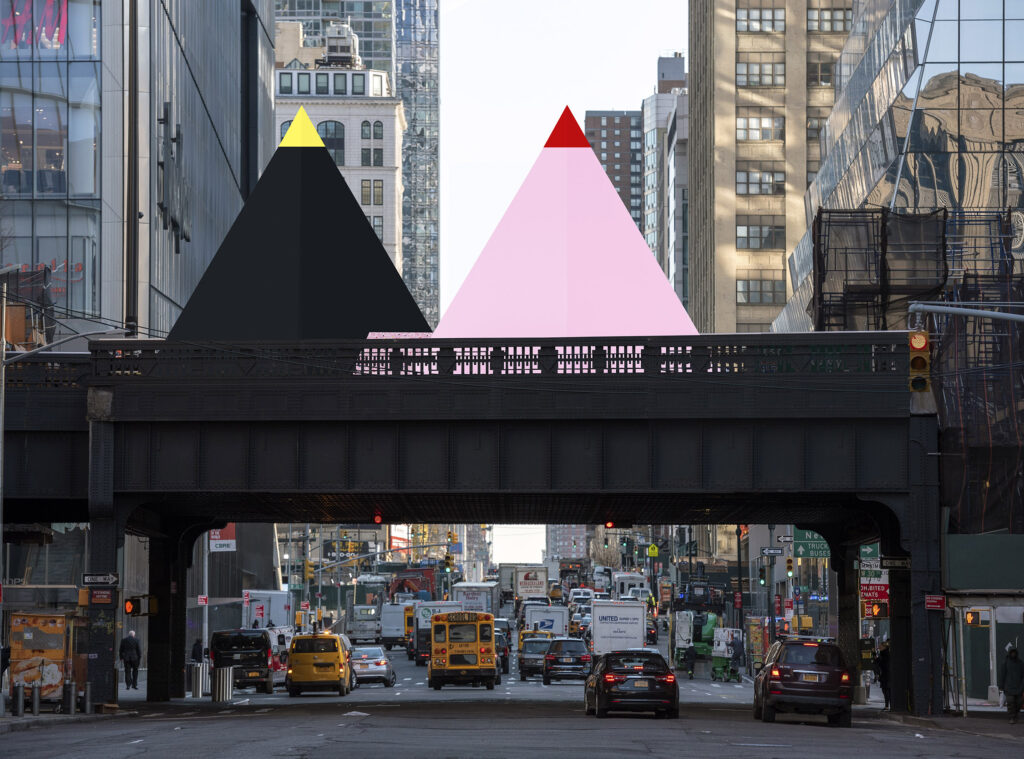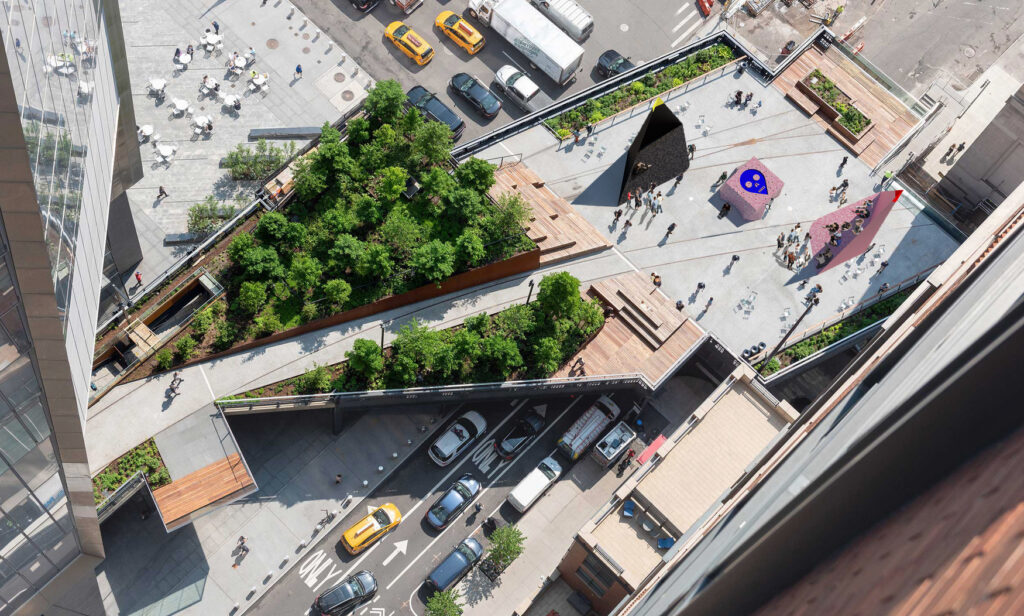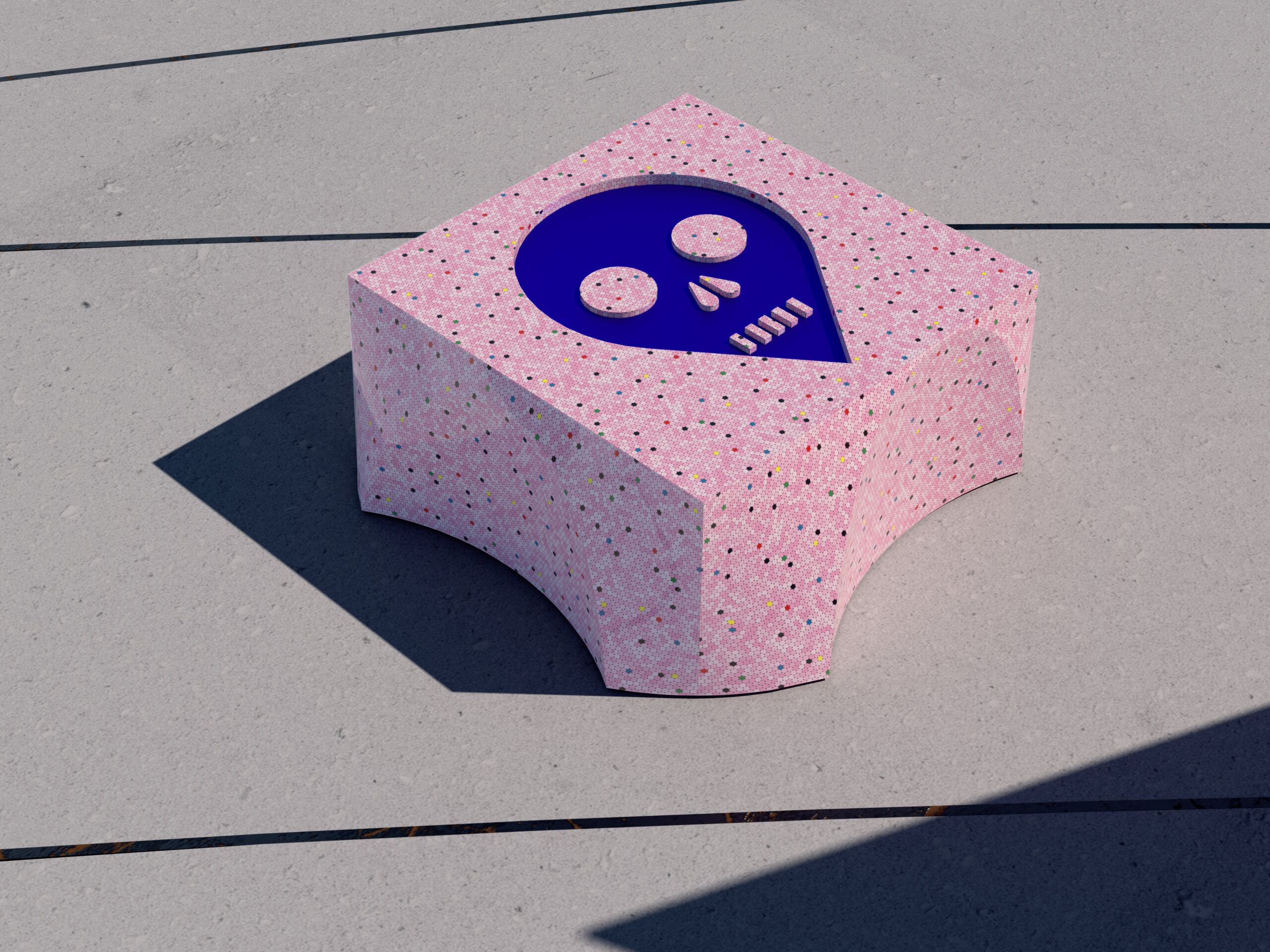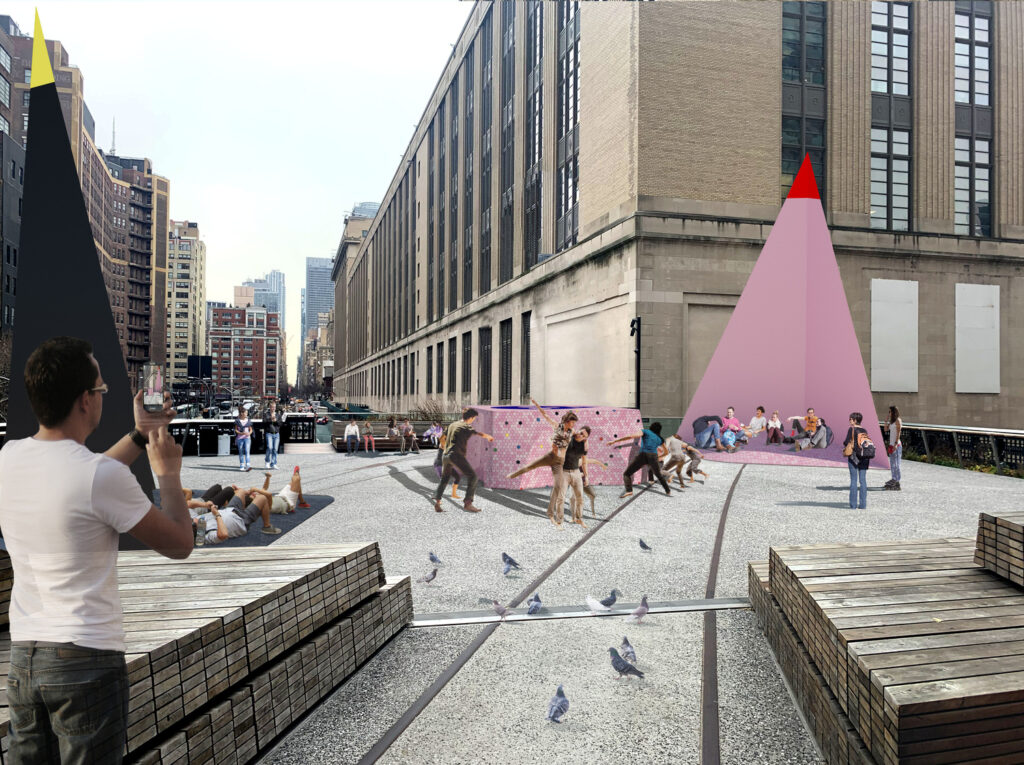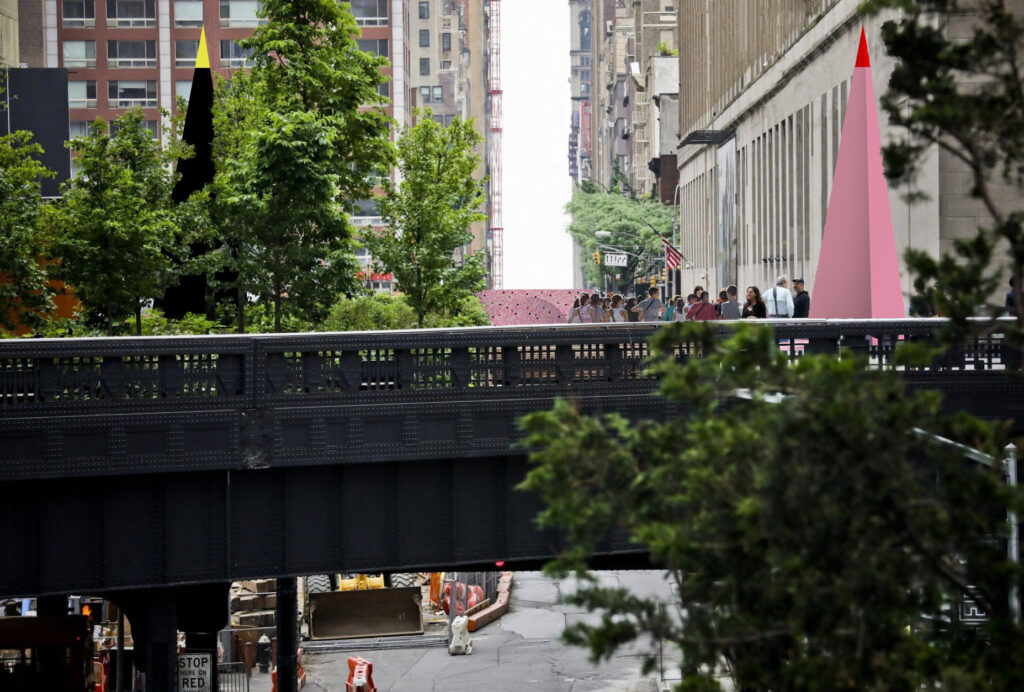THE VOID is a public sculpture, a counter-monument, and space for public gathering, queer performance, and community discussions about the ongoing HIV/AIDS crisis proposed for The Highline Plinth commission in 2020 by Carlos Motta, Koray Duman and Theodore Kerr. The proposal was not selected and remains unrealized.
Today, thanks to AIDS activism and advances in science, HIV can be rendered undetectable within most positive persons’ blood work, resulting in better health outcomes for those living with the virus, and becoming largely not transmissible to others through sex. What we still don’t have is effective treatment for the ongoing stigma, discrimination, and criminalization of those affected by the disease. The dichotomy between medical breakthroughs and social stagnation creates a gulf, a space of mourning and education, of witnessing and of opportunity, of pain and of new paths forward, and a public space in which the past and the future can meet to reflect on the possibilities of the present. We call that public place, a counter-monument: THE VOID.
Two large triangles emerge from the High Line Plinth. One is black, encompassing all the colors of the universe, and the other is pink, the symbolic color of queer liberation. The pink triangle is tipped in red, the color of the iconic AIDS Red Ribbon, and the black triangle in yellow, a color associated with non-binary gender expressions. From a distance, the triangles form a single range across the sky, a space between the surrounding high-rise buildings and the High Line’s foliage. These formal twin structures intentionally echo modernist and minimalist public sculpture and specifically reference the geometric abstract work “Untitled # 1” (2003) by American artist Agnes Martin. But in this formalist composition the range blooms: the two large triangles, buttressed when installed on the Spur by mosaic ceramic-tiled slopes, open inwards like petals, revealing THE VOID, a place of queer reflection, performative action, and community discussion about HIV.
Anchoring THE VOID is the Highline Plinth, reimagined. Rather than being a platform to support a sculpture, THE VOID’s plinth—intricately tiled in waves of pink, with reliefs of black, white, and the primary colors of the iconic Canadian queer art collective General Idea’s work “Imagevirus” (mid 1980s)—is a symbol of the crisis, a counter-monument, a social sculpture, and a foundation to set off the absence of any tangible resolution to the ongoing AIDS social and political crisis.
THE VOID’s plinth can serve as a series of built-in stages for monthly performances, rallies, presentations, and community gatherings regarding HIV and related issues. Each rounded wall of the plinth has a tiled bottom lip, four ready made stages demarcating it from the park. Poignantly, these soft scooped sides also provide respite for visitors, a place to feel the slight hug of the structure in an urban intervention designed for a communion with THE VOID.
Recessed into the top of the plinth is a blue metal skull, viewable in its totality only from above: a postcard-ready image to transmit virally, with an awareness that while the High Line Plinth welcomes thousands of visitors annually, most people experience this site only from afar.
While a skull holds many meanings within history, our use is referential. In 1987, American graphic designer Milton Glaser, creator of the “I Heart NYC” logo, was commissioned by the United Nations (UN) to create a logo for the early days of the AIDS crisis. Glaser’s design consisted of two red hearts—also a source of inspiration for our two multi-colored triangles—bridged by a blue skull. Of Glaser’s skull, The New York Academy of Medicine writes, “Is it cautionary: in the midst of love—erotic love, that is—lurks death? Is it hopeful: compassionate hearts will combine to crush AIDS? Is it both? Glaser produced a striking image, but he also produced an ambiguous one.”
As three cultural producers with backgrounds in art, architechure, activism, and research, we too are motivated by critical ambiguity: Through the referential, multi-layered, and symbolically charged aesthetics of THE VOID, its everyday public use, and through a curated series of monthly public programs, we intended to ask: What do we remember from early responses to HIV? What communities affected by the virus have often been forgotten or misrepresented? How do we memorialize a health, social, and political crisis while it is ongoing? What is an AIDS monument we deserve?
THE VOID aims at providing a public site in a highly visible and public New York City landmark to tackle these important questions, as well as a discursive site— between the past and the future of HIV—to rethink the dire politics of representation and inequality, much characteristic of the present.
